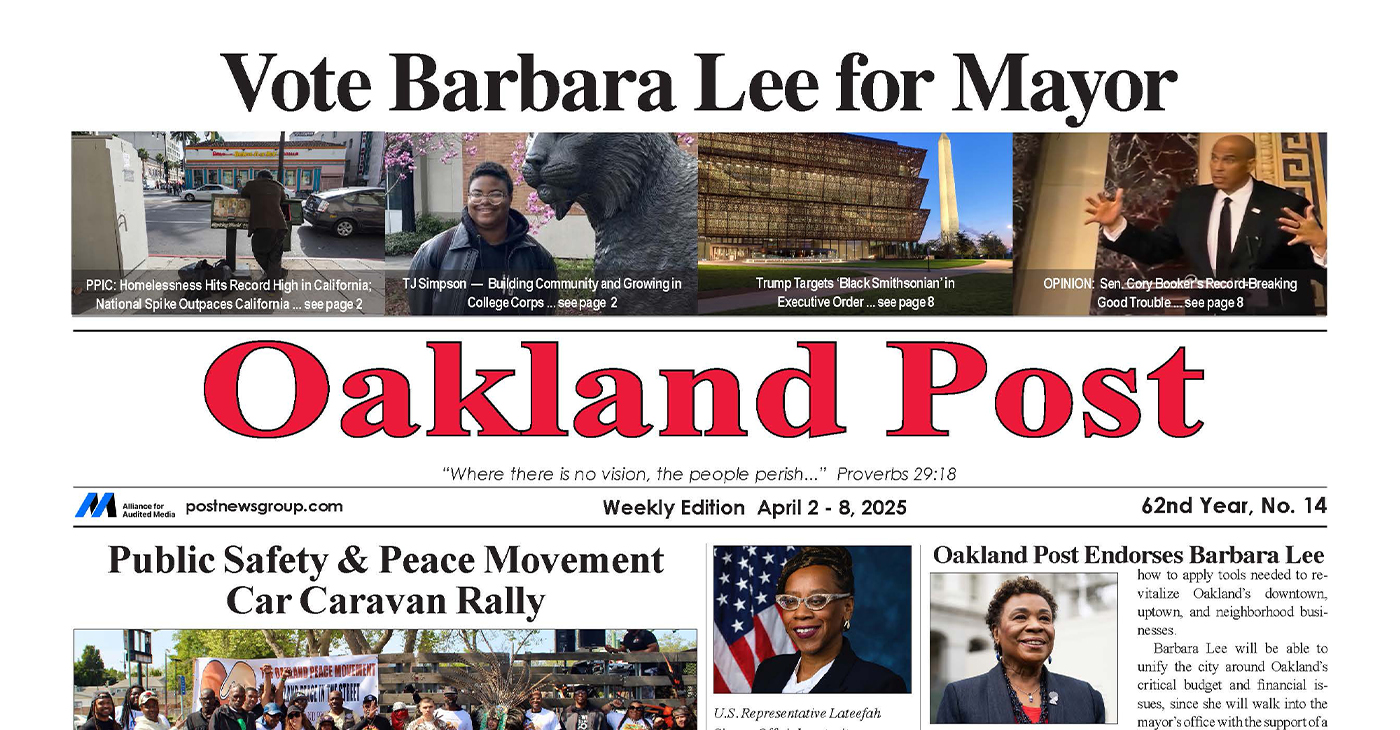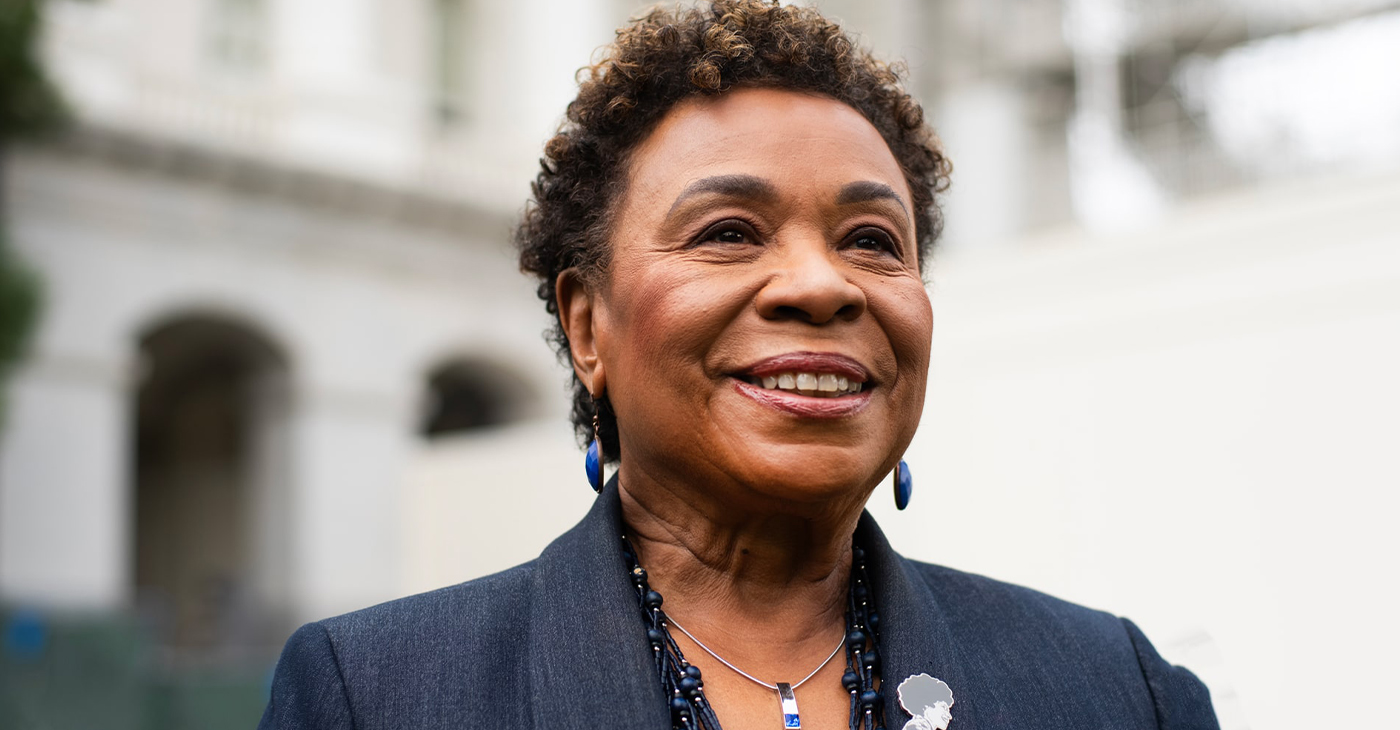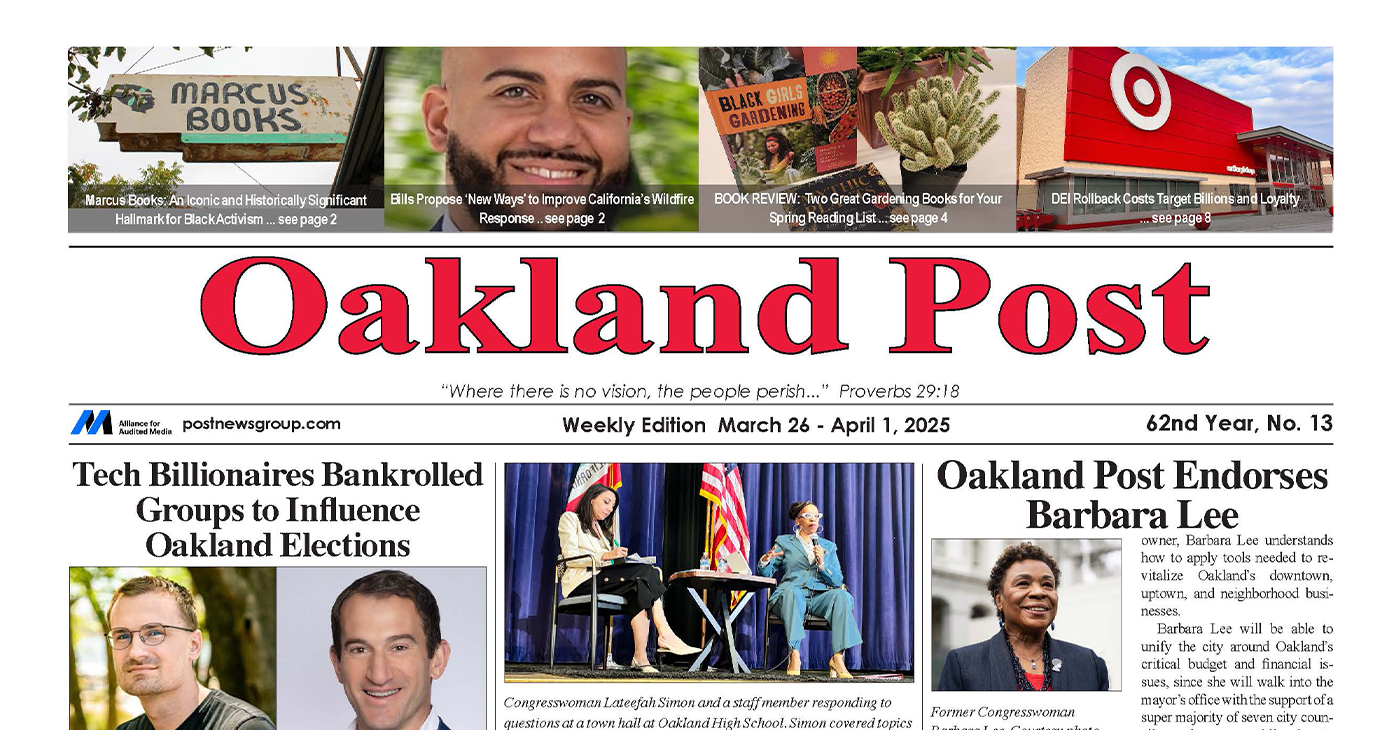Government
We have a Crisis Says Gov Newsom
OAKLAND POST — Gov. Gavin Newsom signed a $214.8 billion state spending plan last week that he and legislative leaders are calling “the Affordability Budget” for the 2019-20 fiscal year.
Taking effect July 1 after the governor hashed out differences with the Assembly and Senate, the budget includes $1.7 billion to fight homelessness, a problem that is affecting more African Americans per capita than any other group in the state. Of that money, $650 million will go to support county and city governments as well as regional homeless prevention agencies in their local efforts to decrease homelessness and increase their stock of affordable housing.
Gov. Gavin Newsom signed a $214.8 billion state spending plan last week that he and legislative leaders are calling “the Affordability Budget” for the 2019-20 fiscal year.
Taking effect July 1 after the governor hashed out differences with the Assembly and Senate, the budget includes $1.7 billion to fight homelessness, a problem that is affecting more African Americans per capita than any other group in the state. Of that money, $650 million will go to support county and city governments as well as regional homeless prevention agencies in their local efforts to decrease homelessness and increase their stock of affordable housing.
“Homelessness. What the hell is going on in our state?” Asked Gov Newsom at an event at the Capitol organized to mark the beginning of the new fiscal year.
“I agree with the critics. I agree with all of you,” said Gov. Newsom. “We have a crisis.”
The new funding represents the largest budget investment in affordable housing, homeless shelters and homelessness support services in the history of the state.
“We have come to agreement on a package of housing measures,” said a joint statement from the governor, Senate pro Tem Toni Atkins (D- San Diego) and Assembly Speaker Anthony Rendon (D-Lakewood).
“One that creates incentives,” their statement continued, “both sticks and carrots – to help spur housing production across this state.”
Large cities will receive a total of $275 million in grants, $190 million will go to counties and an additional $90 million is allocated to fund support and prevention programs.
The budget also provides $167 million for supportive housing primarily for mentally ill people and substance abusers.
Another $52 million is dedicated to fighting homelessness among college students. About 19 percent of Community College students in the state are homeless, according to a Temple University study.
“This homelessness issue is out of control,” Newsom said when he presented his budget last month. “Californians are outraged. They are disgusted.”
With fines that could run as high as $600,000, the governor also plans to begin stronger enforcement of state laws that require county and city governments to plan for new growth.
California, with its Gross Domestic Product of $2.7 trillion, boasts the largest economy in the United States. But the state’s 130,000 homeless population is the largest in the country, too, accounting for nearly 25 percent of all people without a permanent residence in the United States.
The state also has the highest rate of unsheltered homeless people (about 75 percent) and it has seen the sharpest increase in homelessness in the country over the last 4 years.
In the Los Angeles area, the homelessness problem is dire. There are about 59,000 homeless people in Los Angeles County. That number represents a spike of about 16 percent over last year’s total.
For African Americans, the numbers are worse. Although the total Black population is only about 9 percent, African Americans make up about 36 percent of L.A.’s homeless people.
In other Census tracts of the state where there are clusters of African-American residents – Alameda County and San Bernardino County, for example – the rates of homelessness for Blacks is also disproportionate. Take Alameda County, where Oakland is the largest city, African Americans make up about 28 percent of the population, but they account for nearly 70 percent of the county’s homeless people. And down south in San Bernardino County, African Americans make up about 9 percent of the county’s residents and comprise about 15 percent of the homeless population.
In San Francisco, where Blacks only make up about 7 percent of the population, they account for about 36 percent of the city’s homeless.
A number of factors contribute to the high numbers of homeless Blacks in California. According to the Los Angeles Housing Services Authority (LAHSA), they include failing schools, a broken foster care system, high rents, the scarcity of available rental properties, criminal records, racial discrimination and more.
Personal setbacks like the loss of a job, a divorce, illness, etc., may drive families or individuals into homelessness. In fact, less than 50 percent of California’s homeless population are mentally ill or substance abusers. The majority, dubbed the “economically homeless,” fell upon hard times, missed a series of rent or mortgage payments and lost their housing.
Also, more than half of California’s renters are considered “rent burdened,” meaning they spend more than 30 percent of their income to keep a roof over their heads, according to a UC Berkeley report.
Activism
Oakland Post: Week of April 2 – 8, 2025
The printed Weekly Edition of the Oakland Post: Week of April 2 – 8, 2025

To enlarge your view of this issue, use the slider, magnifying glass icon or full page icon in the lower right corner of the browser window.
Activism
Oakland Post Endorses Barbara Lee
Barbara Lee will be able to unify the city around Oakland’s critical budget and financial issues, since she will walk into the mayor’s office with the support of a super majority of seven city council members — enabling her to achieve much-needed consensus on moving Oakland into a successful future.

As we end the celebration of Women’s History Month in Oakland, we endorse Barbara Lee, a woman of demonstrated historical significance. In our opinion, she has the best chance of uniting the city and achieving our needs for affordable housing, public safety, and fiscal accountability.
As a former small business owner, Barbara Lee understands how to apply tools needed to revitalize Oakland’s downtown, uptown, and neighborhood businesses.
Barbara Lee will be able to unify the city around Oakland’s critical budget and financial issues, since she will walk into the mayor’s office with the support of a super majority of seven city council members — enabling her to achieve much-needed consensus on moving Oakland into a successful future.
It is notable that many of those who fought politically on both sides of the recent recall election battles have now laid down their weapons and become brothers and sisters in support of Barbara Lee. The Oakland Post is pleased to join them.
Activism
Oakland Post: Week of March 28 – April 1, 2025
The printed Weekly Edition of the Oakland Post: Week of March 28 – April 1, 2025

To enlarge your view of this issue, use the slider, magnifying glass icon or full page icon in the lower right corner of the browser window.
-

 Activism2 weeks ago
Activism2 weeks agoWe Fought on Opposite Sides of the Sheng Thao Recall. Here’s Why We’re Uniting Behind Barbara Lee for Oakland Mayor
-

 #NNPA BlackPress2 weeks ago
#NNPA BlackPress2 weeks agoRev. Dr. Jamal Bryant’s Black Church Target Boycott Mobilizes 150,000
-

 Activism4 weeks ago
Activism4 weeks agoOakland Post: Week of March 5 – 11, 2025
-

 Activism3 weeks ago
Activism3 weeks agoSan Francisco Is Investing Millions to Address Food Insecurity. Is Oakland Doing the Same?
-

 #NNPA BlackPress2 weeks ago
#NNPA BlackPress2 weeks agoRecently Approved Budget Plan Favors Wealthy, Slashes Aid to Low-Income Americans
-

 #NNPA BlackPress4 weeks ago
#NNPA BlackPress4 weeks agoTrump Moves to Dismantle Education Department
-

 #NNPA BlackPress4 weeks ago
#NNPA BlackPress4 weeks agoFighting to Keep Blackness
-

 Activism2 weeks ago
Activism2 weeks agoFaith Leaders Back Barbara Lee for Mayor, Criticize Candidate Loren Taylor for Dishonest Campaigning




















































5 Comments